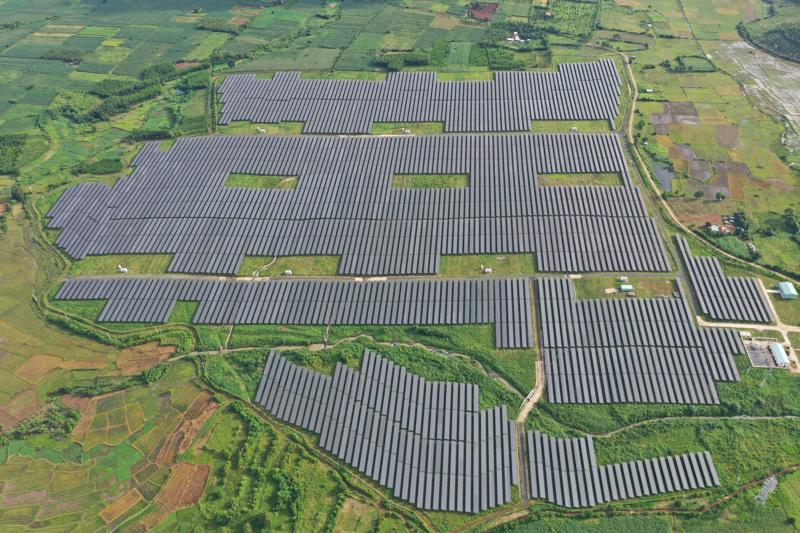SP Group entered Vietnam in 2020 and early last month acquired two solar farms in south-central Phu Yen province. Why did the company do so?

Since SP Group entered Vietnam in 2020 it has been our objective to contribute to and support its decarbonization targets and empower the country’s clean energy transformation and net-zero emissions targets. Over the past few years, we have invested in several projects in central Vietnam, including the acquisition of two solar farms in Phu Yen with total capacity of 100 MWp (megawatt-peak) and the development and operation of a 2.4 MWp rooftop solar project at Sabeco’s factory in central Quang Ngai province. These projects will help Vietnam reduce its carbon dioxide emissions by up to 107,000 tonnes annually.
Despite the global economic uncertainties, we are confident in Vietnam’s continued long-term development and the country’s potential in sustainability given the strong government support. However, we are not just limiting our sustainability initiatives to central Vietnam. We have also invested in other clean-energy projects around the country, such as in Dong Nai province in the south, Can Tho city in the Mekong Delta, and Thanh Hoa province in the north-central region, among others. We will also continue to seek suitable sustainability projects in the country where feasible, and contribute to the country’s clean energy targets.
We feel that central Vietnam possesses tremendous opportunities to unlock the potential of renewable energy by leveraging its bountiful solar resources and strong government support. This region possesses one of the highest solar generation capabilities, based on the Global Horizontal Irradiation (GHI), with central Vietnam being one of the strongest regions in the country for solar energy development projects. Additionally, with the land in the central region not being suitable for agriculture, it carries greater value to be utilized for solar farm development.
What are the challenges when developing green projects in central Vietnam?
Currently, the growth of electricity demand and consumption across Vietnam is higher in the northern region compared to the central and southern regions. However, the conditions for solar generation are stronger in the central and southern regions than in the northern region, due to meteorological conditions and the amount of direct sunlight received. This imbalance puts pressure on the country’s existing electricity infrastructure, especially the north - central - south high-voltage transmission network.
This is not unique to Vietnam and is a challenge faced by many countries globally as they transition to the greater use of renewable energy but the areas that are suitable for renewables are not near the areas with energy demand. It may be an opportune time to review various options to strengthen the ability to transfer electricity around the country. Beyond increasing traditional transmission capacity, the incorporation of other energy storage systems such as batteries will also help maintain the reliability of the national electricity grid and can be a key factor in enabling the further integration of solar, wind, and other renewable energy sources. This may enable Vietnam’s network to leapfrog other countries to be a leading renewable ready network.
What do you think about the support from the government to strengthen green projects in Vietnam?
Vietnam is in a strong position to model sustainable development for Southeast Asia due to its abundant natural resources for clean energy projects and the government’s strong support for sustainability. It has announced ambitious climate change targets to reach net-zero carbon emissions by 2050, to phase out coal-fueled power generation by 2040, and to stop deforestation and reduce greenhouse gas emissions by 2030. Other key targets announced include increasing the share of renewable energy to over 30 per cent of the country’s energy mix, and to maintain a stable forest coverage of 43 per cent.
To supplement targets and ambitions, Vietnam has also published policies and guidelines on economic growth towards sustainability, environmental protection, climate change adaption, and enhancement of investment quality and efficiency, particularly FDI, focused on attracting new “green” and higher-quality projects. These targets and ambitions demonstrate the strong political commitment and determination of Vietnam in accelerating its economic transformation, contributing to addressing major global challenges of climate change and environmental issues.
Vietnam made an ambitious announcement at COP26 that it will reach net-zero carbon emissions by 2050. What does this mean for SP Group’s development plan?
The Vietnamese Government’s strong support for sustainability and its ambitions for a net-zero future is a strong factor for SP Group’s decision to bring our sustainability expertise to the country. We have committed to invest more than $500 million in sustainable projects. To leverage Vietnam’s solar potential, we have also announced a target of 1.5 GW of utility scale and rooftop solar projects by 2025.
With the country’s appetite for clean energy projects and solutions, SP Group also aims to bring in cutting-edge sustainable energy solutions and technologies to enable cities, districts, townships, and customers in commercial and industrial sectors to improve energy efficiency and decarbonize. This includes innovative sustainable energy solutions like district cooling that will help districts and buildings save energy, lower carbon emissions, and even provide cost savings while providing the same cooling comfort.
Integrated energy services is another route that can help buildings in Vietnam lower their energy consumption and carbon footprint. Green Energy Tech (GET) is a suite of digital energy management solutions that leverage data insights, the Internet of Things, and artificial intelligence to enable businesses to optimize energy efficiency, enhance occupant comfort, and advance sustainability efforts. Enabling more buildings in Vietnam go green will go a long way towards helping the country achieve its sustainability goals.









 Google translate
Google translate